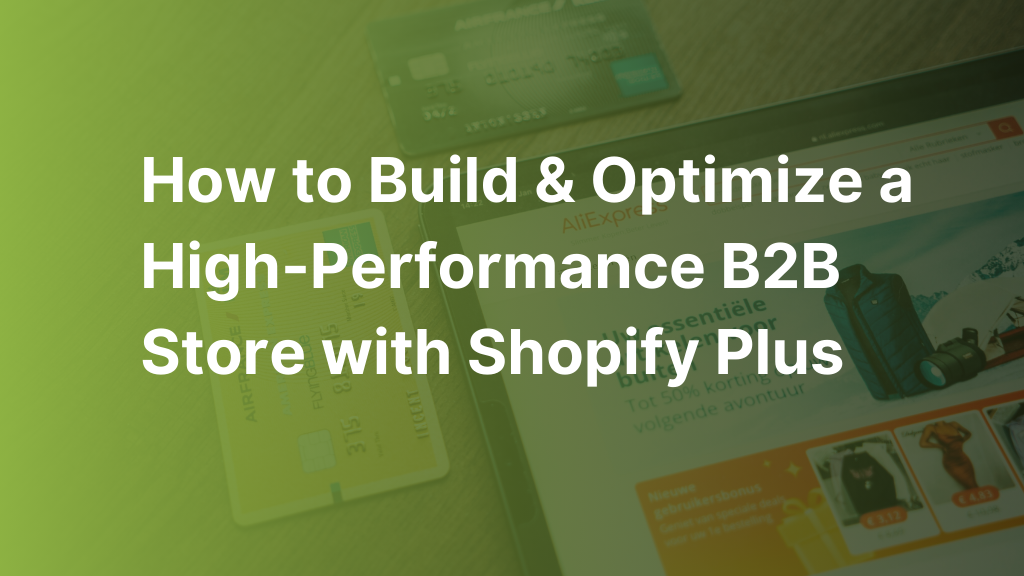Imagine boosting your B2B order conversion rates by 60%! That’s exactly what Wodabox, a leading sports accessory brand, achieved by optimizing their B2B store with Shopify Plus. Their success story is an example of how the B2B eCommerce landscape is being revolutionized.
In this two-part blog, we’ll equip you with the tools and strategies to not just survive, but thrive, in this exciting new era of B2B commerce. Here’s how you can achieve similar results to Wodabox: we’ll explore the essential steps to building a thriving B2B store, followed by powerful optimization strategies to take your B2B experience to the next level.
In today’s B2B landscape, a well-crafted eCommerce store isn’t a luxury; it’s a necessity. It’s the gateway to capturing your share of the booming B2B market and exceeding customer expectations. But simply having a store online isn’t enough. To truly thrive, you need a B2B store specifically designed to convert. That’s where BSS Commerce comes in.
We’ve developed a proven 5-step process on Shopify Plus that takes the guesswork out of building a high-performance B2B store. Let’s explore these key steps and see how they can transform your B2B online presence.
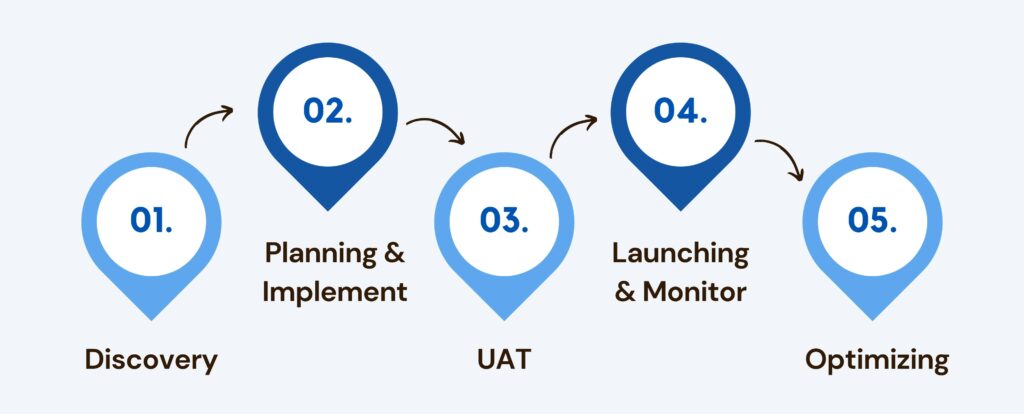
Step 1. Discovery Phase
The foundation of any successful B2B store lies in the discovery phase. This crucial initial step sets the stage for crafting a platform that perfectly aligns with your business goals and resonates with your target audience. At BSS Commerce, we take a comprehensive approach to discovery, focusing on five key aspects to ensure your B2B store is built for long-term success.
1.1. Understand who and where B2B merchants are in the B2B landscape.
This aspect revolves around collecting information so that BSS Commerce has a deep understanding of the business’s position in the context of the B2B e-commerce market. Some points this aspect can explore include:
- Are you a manufacturer or a brand selling your own products?
- Are you a distributor and wholesaler selling products from various brands?
- Are you primarily a B2B merchant, or do you sell to both B2C and B2B customers online?
- What are the sales channels and target customers you are aiming for?
- What payment methods and pricing models will you use?
- What is your order fulfillment process, and are there any integrations with your systems that you would like to share with us?
The more we understand how your business works and operates today, the easier it is for us to help you transition to a new B2B eCommerce platform appropriately and quickly.
1.2. Understand Shopify B2B features & important terms
The second crucial aspect is understanding the potent features of Shopify Plus specifically designed for B2B businesses and important terms.
Take the time to understand features like customer-specific catalogs, wholesale credit options, easy reordering, or multi-currency support, and how these features can benefit your business.
Some key B2B features include the ability to sell to multiple buyers and locations, catalog functions for controlling product details and pricing, quantity rules, customer-specific product publishing, and pricing settings.
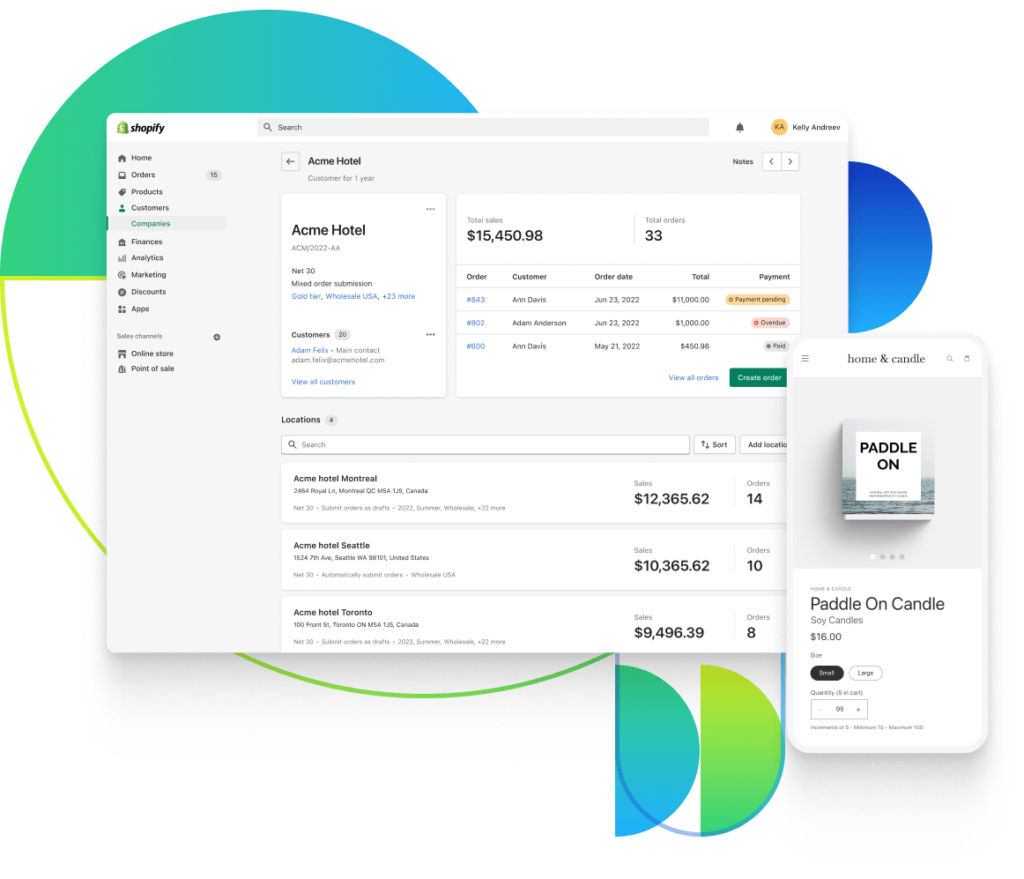
1.3. Review B2B considerations
The discovery phase isn’t just about identifying your B2B landscape and Shopify Plus features; it’s also about setting realistic expectations. Here at BSS Commerce, we believe in complete transparency. Therefore, it’s important to acknowledge some key B2B considerations, for example:
- Order Requirements
- Ineligible or incompatible features for B2B orders
- B2B customer requirements
- Company location requirements
- Activating additional features for B2B orders

By openly discussing these B2B considerations during the discovery phase, we can ensure a seamless transition into the development process. You’ll have a clear understanding of Shopify Plus’ capabilities and any potential adjustments needed to optimize your B2B store for maximum performance.
1.4. Define your goals & prioritize pain points to be solved
It’s crucial to differentiate between your needs and wants, as this affects the budget and resources allocated to your project. Setting SMART goals, identifying risks and challenges early, and devising solutions in the early stages will help avoid unnecessary complications later on.
1.5. Choosing a blended or dedicated store format
The flexibility of Shopify Plus empowers you to choose between a blended store or a dedicated store format for your B2B needs. Unlike other features, changing your store format after launch can be complex. Therefore, careful consideration during the discovery phase is key.
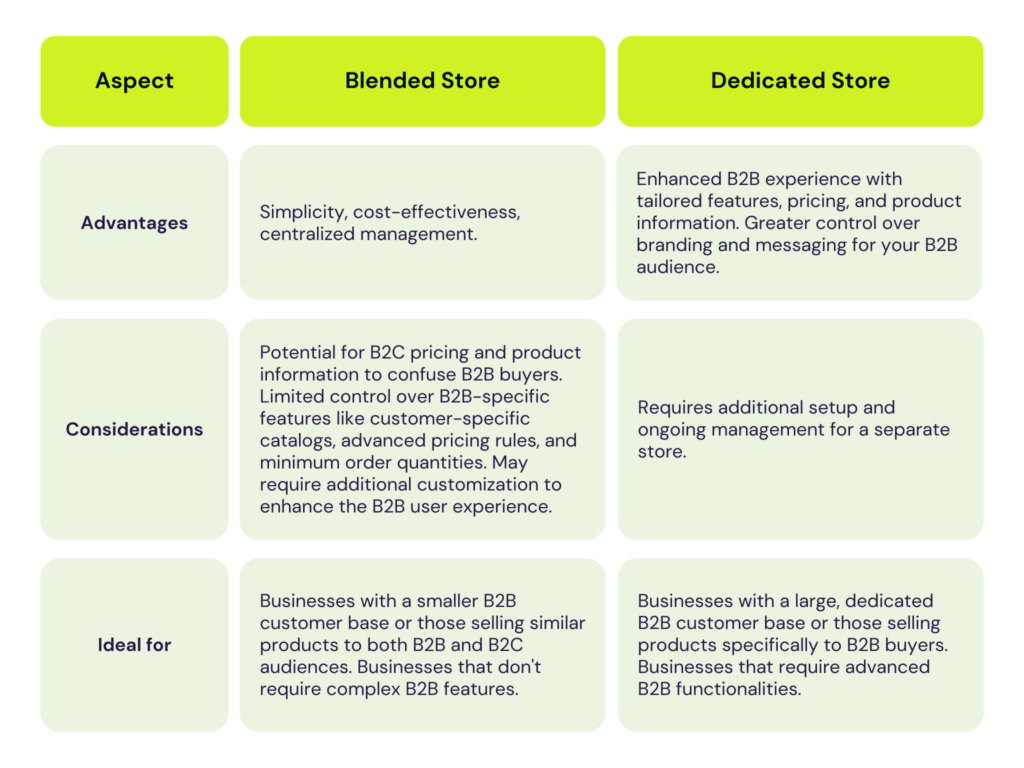
The Choice is Yours! By understanding your B2B goals, target audience, and existing workflow, BSS Commerce can guide you toward the optimal store format. Ultimately, the best choice is the one that aligns with your long-term B2B eCommerce strategy and delivers a superior experience for your B2B customers.
Ready to build your thriving B2B eCommerce store? Contact BSS Commerce for a free consultation and turn your vision into reality!
Step 2: Planning & Implementation: Turning Your Vision into Reality
During this period, BSS Commerce’s team of experts will utilize their expertise to turn ideas on paper into reality. So how do we ensure the process runs smoothly?
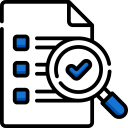
Detailed Planning
We meticulously outline project requirements, and then assign tasks to each member. This aspect includes detailed and clear estimates of resources, budget, and completion time to be able to establish detailed project milestones and expected results to be delivered for customers.

Execution
With a clear plan and roadmap previously developed, our team proceeds to execute according to the proposed plan. We maintain regular communication between the internal team and stakeholders to ensure information is consistent.
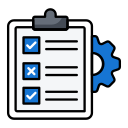
Project Management
We leverage project management platforms to track progress and identify potential difficulties or roadblocks proactively. This allows for timely adjustments and timely measures to get your B2B store on track as originally planned
To initiate a successful planning and implementation phase, a clear understanding of the project scope is crucial. This includes:
- Detailed Project Requirements: A comprehensive list of desired features, functionalities, and goals for your B2B store. This clarity allows us to accurately estimate the resources, budget, and timelines needed to bring your vision to life.
- Required Resources: Identifying the human expertise, technical capabilities, and potential external resources needed for the project.
Once all this information is gathered, the planning & implementation phase delivers several crucial documents:
- Work Breakdown Structure: A detailed breakdown of all project tasks, ensuring clarity and efficient execution.
- Project Schedule: A clear timeframe outlining the project’s expected start and end dates, with key milestones highlighted.
- Communication Management Plan: A comprehensive strategy for maintaining clear and consistent communication throughout the entire development process.
Step 3: UAT - Refining Your B2B Experience
The UAT phase is your chance to put your B2B store through its paces and ensure it meets your expectations before launch. During UAT phase, the team has already finished developing and testing all the features included in the agreed scope of the project.
In the UAT phase, we have some following key inputs:
- Robust & Tested System: A thoroughly developed and rigorously tested system that adheres to the mutually agreed-upon project scope is essential. This ensures a bug-free platform ready for your evaluation during UAT.
- Clear Communication: Open and consistent communication channels between the BSS Commerce team representative and you are paramount. This ongoing dialogue keeps you informed about the system’s development progress and functionalities, preparing you for the upcoming UAT phase.
What You’ll Receive After UAT:
A successful UAT phase culminates in several key deliverables:
- Comprehensive User Guide: A clear and concise guide for navigating your B2B store’s features and functionalities.
- Collaborative UAT Sessions: Interactive sessions with the BSS Commerce team for collaborative testing and refinement of your B2B store.
- Post-UAT Action Plan: A detailed list of any additional work or minor adjustments identified during UAT, ensuring your B2B store exceeds expectations.

Step 4: Launch & Monitor - Optimizing Your B2B Powerhouse
Your B2B store is ready to hit the ground running! The launch and monitor phase ensures a seamless launch and lays the foundation for ongoing optimization.
During this critical stage, constant monitoring allows BSS Commerce to refine your B2B store and maximize its potential continuously. Here’s how:
- Performance Tracking Dashboard: We implement a comprehensive performance tracking system that measures team member progress against Key Performance Indicators (KPIs). This data helps us identify successes and address any potential delays, ensuring your B2B store goes live as planned.
- Resource Efficiency Analysis: By comparing actual resource allocation and budget usage with initial projections, we assess project efficiency. This data-driven approach allows us to identify areas for improvement for future projects.
- Deliverable Quality Assurance: Our commitment to quality extends beyond launch. We meticulously monitor the quality of all project deliverables, ensuring your B2B store functions flawlessly and meets all agreed-upon standards.
By effectively monitoring your B2B store, we can achieve the following goals:
We provide a detailed analytical assessment of the team's overall performance, including insights into individual member contributions. This allows you to identify areas of strength and potential for improvement within the team.
You will receive a detailed quality report outlining every aspect of your B2B store. This report will cover functionality testing, performance optimization, and security audits, ensuring your store operates flawlessly.
Continuous monitoring is the fuel that propels your B2B store forward. By working collaboratively, we can ensure a successful launch and unlock the full potential of your B2B eCommerce platform. Stay tuned for the final step – ongoing optimization!
Step 5: Optimization - Keeping Your B2B Powerhouse Running at Peak Performance
Your B2B store is live and thriving! The final step – optimization – ensures its continued success and adaptability in the ever-evolving eCommerce landscape.
The optimization phase is a collaborative effort between BSS Commerce and the client. Together, we can identify areas for improvement and implement strategies to enhance your B2B store’s performance and functionality.
To achieve successful optimization, the following inputs are crucial:
- Performance Data: Having access to a comprehensive speed and performance report, benchmarked against industry standards, allows for targeted optimization strategies.
- User Feedback: Your customers are the heart of your B2B business. To ensure your B2B store evolves to better meet their needs, we actively gather and analyze feedback through an efficient system of surveys, feedback forms, and direct communication channels. This valuable data helps us pinpoint areas for improvement.
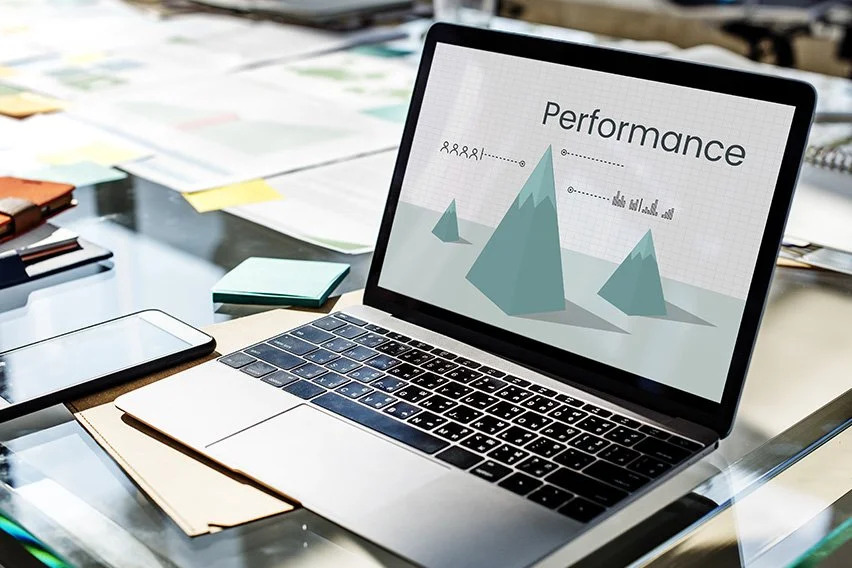
After gathering all the details, the outputs of the optimizing phase should include:
- Technical Solutions: Based on the data gathered, we develop and implement technical solutions to optimize your B2B store’s speed, performance, and scalability. This ensures your platform can continue to handle increasing demands as your business grows.
- Future Development Roadmap: A well-defined document outlining potential feature improvements and enhancements for future development phases. This roadmap equips you with a clear vision for the ongoing evolution of your B2B store.
By continuously optimizing your B2B store, you ensure it remains a powerful and dynamic tool for driving growth and success.
Ready to build your thriving B2B eCommerce store? Contact BSS Commerce for a free consultation and turn your vision into reality!
Part II. Optimizing Your B2B eCommerce Experience: Essential Strategies
Creating your B2B store on Shopify Plus is just the beginning of your eCommerce journey. Just as B2C experiences prioritize ease of use and scalability, B2B success depends on creating the perfect customer journey that is tailored to your specific business needs. This is where customization comes in. Let’s explore some important techniques to optimize your B2B eCommerce store and unlock its full potential!
Strategy 1: B2B Theme Customization
The foundation is laid, your B2B keep is live! But the adventure would not give up there. To surely optimize your B2B eCommerce revel in, take into account customizing your subject to better cater on your precise commercial enterprise desires and customer preferences.
Here are some key strategies to consider:
- List View for Collections: By default, many themes showcase products in a grid format. However, B2B buyers frequently pick a listing view. This permits them to without difficulty compare multiple objects at a look, including info like pricing and specs. Implementing a list view can appreciably enhance the browsing enjoy in your B2B clients.
- Add to Cart from Product Listing Page (PLP): Simplify the buying process by enabling customers to add products directly from the PLP. This eliminates the need to navigate to individual product pages, saves valuable time and improves overall conversion rates.
- Manufacturer’s Suggested Retail Price (MSRP): While B2B pricing can be complex, disclosing the MSRP of your negotiated price can provide valuable clues to your customers. This allows them to understand the potential benefits they are getting from your B2B partnership.
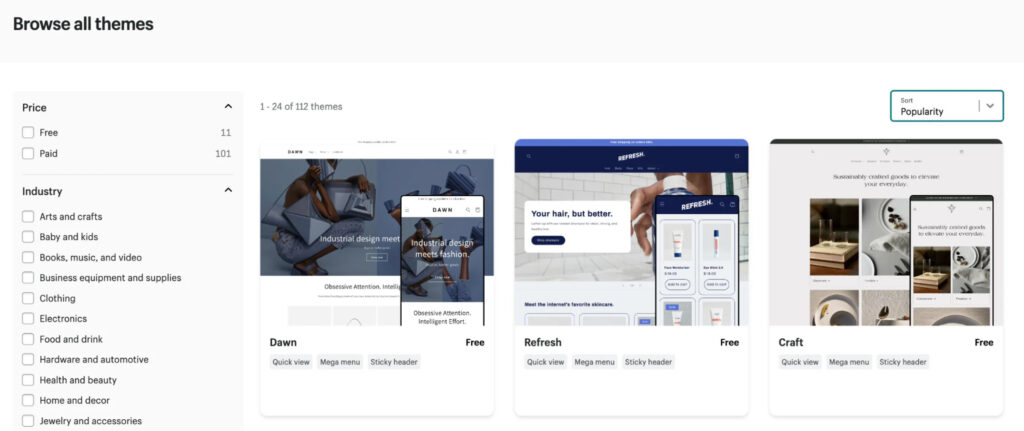
Remember, B2B price is sticky ground. offers different pricing per unit based on various factors such as customer segments, order history, and region. However, the changes described above can still improve the overall user experience for your B2B customers, regardless of your specific pricing strategy.
Strategy 2: Metafields
What is Metafields? Think of metafields as additional storage partitions in your repository’s data system. They allow you to collect additional information beyond what is normally captured in the Shopify Admin.
1. Customized data for everything
Collect specific information about your companies, customer locations, or even individual products. This may include things like department-specific communications information, preferred geographic delivery methods, or unique technical details.

2. Advanced business processes
Metafields unlocks powerful ability to manage pre-orders, stock outages, and even credit limits. Let’s explore some real-world examples:
#1 Pre-Order Power
Want to create buzz for an upcoming product launch? Use metafields to retrieve existing orders and change how they are displayed to customers. Many B2B retailers limit their preorders to only a small number of customers. If this applies to you, we recommend creating a separate customer group for the products in the preorder and assigning it to this group.

Other types of merchants, such as clothing manufacturers who release products on a seasonal basis, want all B2B customers to receive products upon pre-ordering. In that case, we will not be doing a separate cart program. Instead, we add a metafield to the product’s collection. Now, we can use the section and block functions in your theme editor to associate the metafield with your theme.
#2 Out-of-Stock Management
Provide a seamless experience for out-of-stock items. Set thresholds for pre-orders on items running low, or display estimated restock dates to keep your customers informed.
#3 Credit Limit Control
For B2B transactions, managing credit limits is crucial. Metafields can help you establish limits for specific customers, ensuring smooth financial operations.
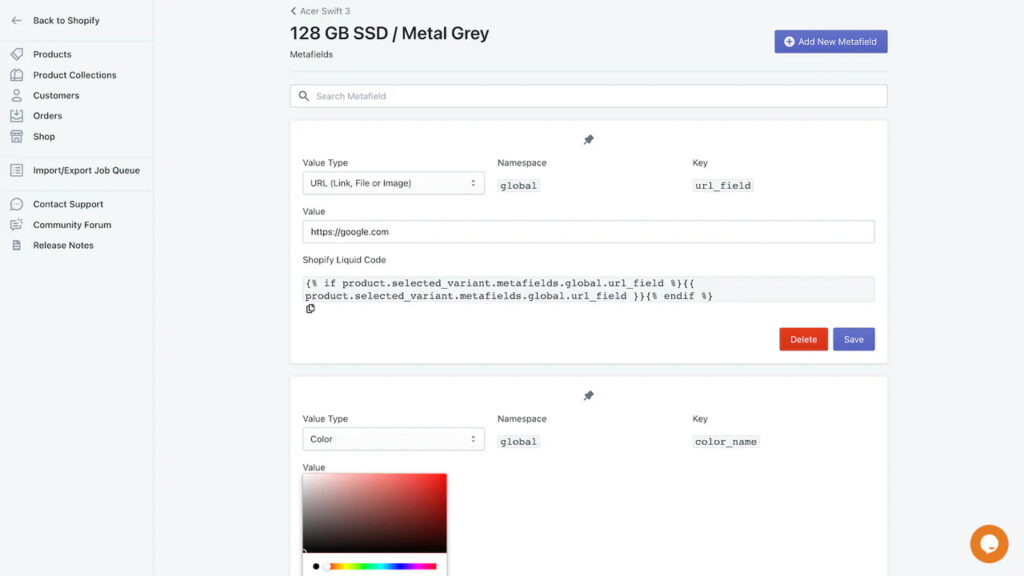
The possibilities are endless! Metafields allows you to customize your B2B store to suit your specific needs and business model. By leveraging their capabilities, you can create more efficient and user-friendly experiences for your customers, ultimately increasing sales and strengthening B2B presence
Strategy 3: App & Partner Ecosystem
Your B2B store is live, but the optimization power doesn’t stop! Shopify offers a great ecosystem of partners who are there to help you. You can choose from a variety of apps available to power your store, such as marketing tools to improve customer experience or apps to improve cash flow.
Here’s how you can use this powerful ecosystem:
- Partner ecosystem: Shopify has a strong list of partners. These partners can provide value-added services such as custom app development, integration solutions, and strategic consulting. Regardless of your specific needs, there is a partner waiting to help you reach the full potential of your B2B store.
- Shopify App Store: The Shopify App Store has many apps specially designed to enhance B2B eCommerce. For example, for seamless data integration between your B2B store and other business systems, use Shopify’s suite of B2B APIs. These APIs allow you to connect your ERP (enterprise inventory management), PIM (product information management), and WMS (warehouse management system) to your Shopify store.
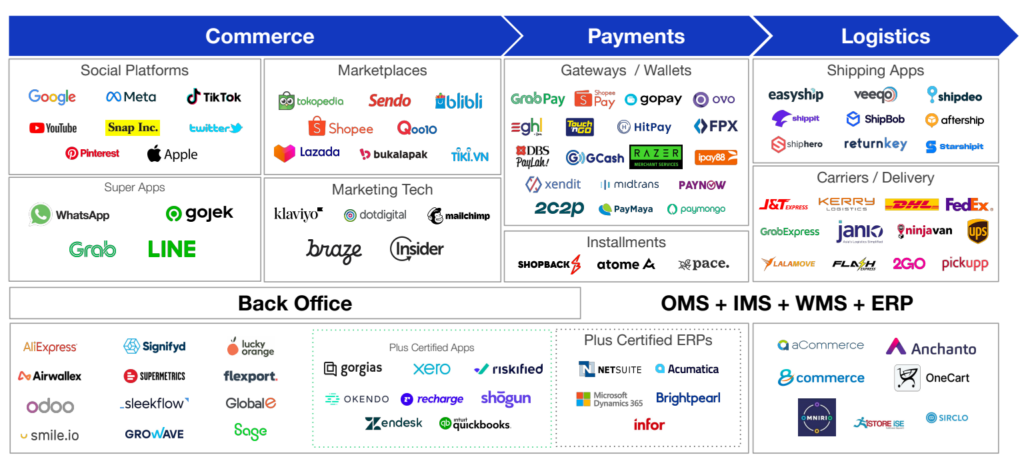
By leveraging the power of partners and apps, you can unlock a world of possibilities to optimize your B2B store. Embrace the ecosystem and watch your B2B sales soar!
See How B2B Orders Soar with Shopify Plus
Now that you’ve explored some ways to optimize your B2B store, let’s see how these strategies translate into real-world success! Take Wodabox, a sporting goods brand in France and Europe, for example. Founded in 2014, Vodabox is dedicated to providing high-quality products to sports fans.
Growing their business meant creating a thriving retail network. Wodabox actively encourages customers to be sellers, but facilitating sales for retailers and wholesalers has presented challenges. Major obstacles for resellers included basic pricing, managing tax breaks, and managing B2B orders effectively. Wodabox needs a complete solution to unlock its B2B potential.
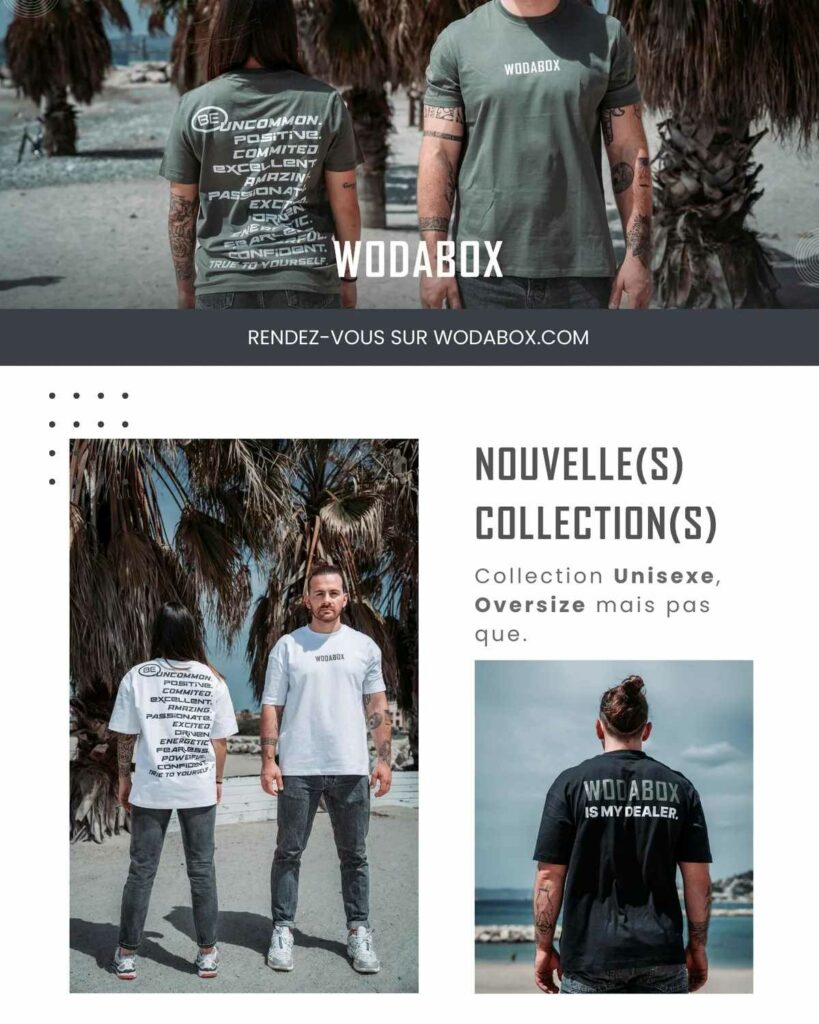
This is where Shopify Plus and BSS Commerce came into play.
Shopify Plus provided the robust platform Wodabox needed to manage their B2B operations. BSS Commerce, a certified Shopify Plus partner, provided expertise and solutions to optimize their stores, especially for B2B needs.
The B2B/Wholesale Solution app by BSS Commerce played a starring role in Wodabox’s success story. Here’s how it helped:
BSS Commerce’s B2B/Wholesale Solution app played a key role in Wodabox’s success story. Here’s how it helped them:
Feature 1: Custom Pricing (CP)
This feature allowed Wodabox to create preferential pricing structures for resellers based on their current retail prices
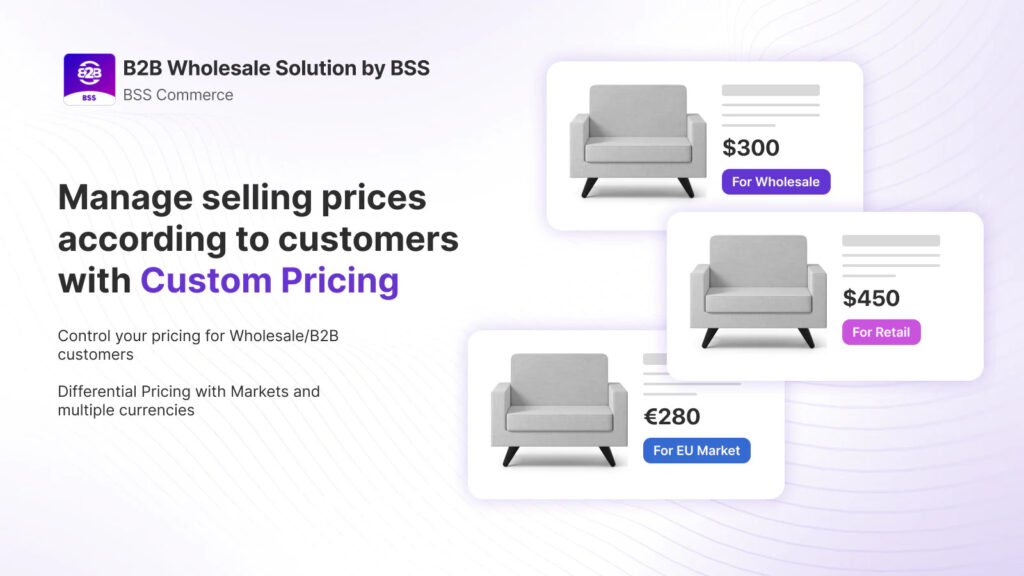
Feature 2: Tax Display and Tax Exempt
Wodabox gained control over displaying prices with and without taxes, ensuring clear pricing communication for all customer segments.
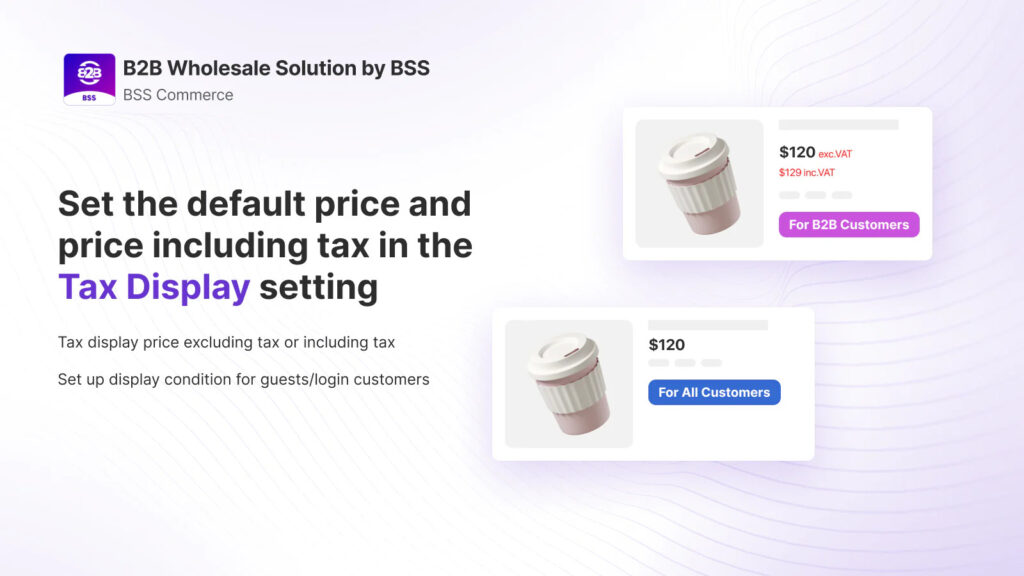
Feature 3: Discount Codes
The app seamlessly integrated with the CP function, enabling Wodabox to create discount codes for resellers alongside automatic discounts.
Feature 4: Auto Tags
BSS Commerce’s Auto Tags functionality empowered Wodabox to categorize and manage B2B customer orders more effectively.
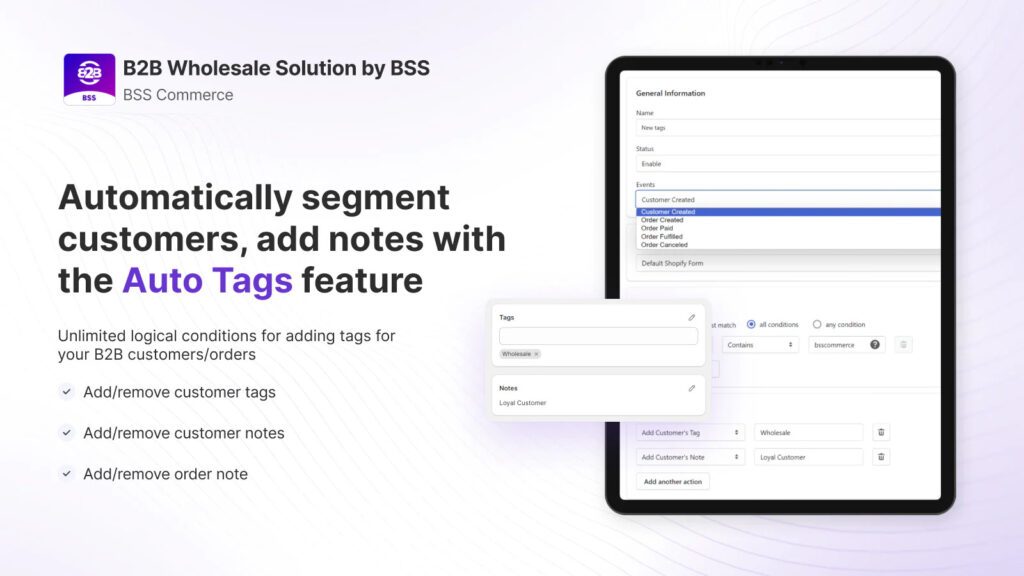
The results? Impressive! With the B2B/Wholesale Solution app, Wodabox achieved:
The B2B solution significantly boosted order conversion rates among resellers.
Effective
Sales to Resellers
Streamlined processes facilitated smoother sales interactions with resellers.
Accurate
Pricing Structures
Wodabox implemented accurate and differentiated pricing models for resellers.
Building a thriving B2B eCommerce store requires a strategic approach. This blog series gives you a comprehensive guide, from the basic 5 step development process to powerful optimization techniques.
Remember the journey doesn’t end here! The B2B eCommerce landscape is constantly changing. By embracing continuous improvement and staying abreast of trends, you can ensure that your B2B store remains a major competitive force.
Ready to build your thriving B2B eCommerce store? Contact BSS Commerce for a free consultation and turn your vision into reality!
